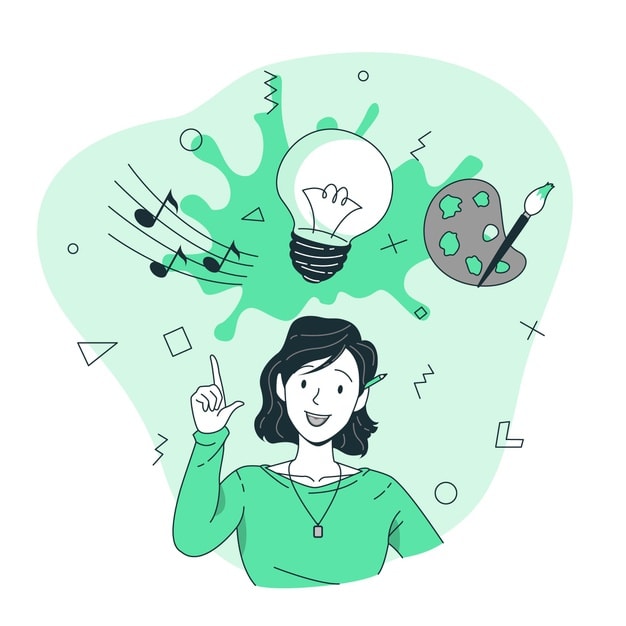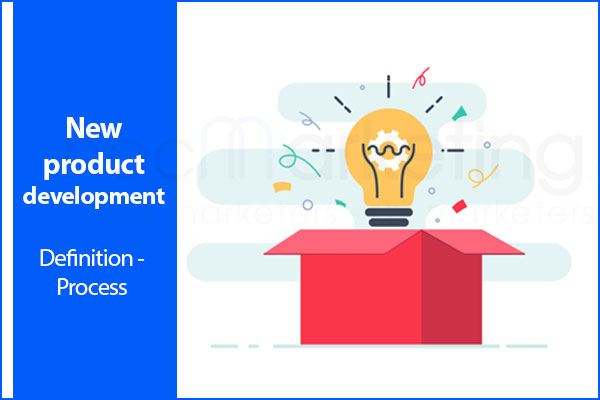
Understanding Design Thinking: Types, Key Elements & How to Implement

Design thinking is a human-centered approach to problem-solving that involves empathy, creativity, and iteration It's a process that seeks to understand the needs of users and create innovative solutions to meet those needs Through collaboration and experimentation, design thinking can lead to impactful and meaningful outcomes for businesses and individuals alike
Through design thinking, problem-solvers engage in an iterative process of identifying client/user needs, questioning assumptions, and reframing the problem to uncover new approaches and solutions that may not be immediately apparent. By gaining a deep understanding of their target audience, businesses can create more effective and personalized products. Empowered by design thinking, companies and their design teams are able to cultivate empathy for their clients and develop solutions that truly meet their needs.
Designers are compelled to scrutinize the problem, presumptions, and results repeatedly until a human-focused design-led solution emerges through an iterative design process. This solution is then prototyped and tested, and if necessary, the entire procedure is repeated until all stakeholders are convinced of the convenience, usability, attractiveness, and marketability of the product. Forbes Magazine recognizes 'Design Thinking' as the big trend of contemporary times.
Design thinking is a methodology that promotes innovation through a systematic and structured analysis of specific challenges within a particular industry or process. Its ultimate goal is to create results that cater to the needs of customers, the wider market, and the business in the most effective and efficient way possible. In this article, we will delve into the world of design thinking and explore how it can be utilized to achieve optimal outcomes. So, let us begin our journey of uncovering the power of design thinking.
Introduction to Design Thinking
Everyone in the world always has a new thought or idea which they feel is new and innovative. But what makes your plan stand out from the others?
Design thinking is a structured process supported by a range of skills that aids in creative decision-making and problem-solving. This approach is particularly beneficial for organizations and businesses that aim to address the needs of their target audiences. Various sectors in society utilize design in various ways, such as for construction, business structure modeling, AI development, and other commercial activities. For those working within a commercial organization, design thinking is a crucial element for achieving success.
The practice of design thinking, which involves open idea generation, multidisciplinary coordination, prototyping, implementation, and constant refinement, is an effective approach to addressing a variety of business challenges. This user-driven methodology incorporates project-based work processes and utilizes deductive, inductive, and abductive reasoning, all while encouraging collaboration among team members. Unlike traditional approaches that prioritize analysis, analytics, and quantitative research, design thinking prioritizes the creation of ideas that align with the needs and preferences of users.
Understanding the target audience's perspective, communication style, and utilization of a product or service is a crucial aspect of the thinking process. To enhance associated activities and responses, it is important to have an anthropological approach towards this understanding.
With businesses such as Proctor and Gamble, Apple, Philips Electronics, General Electric, Nike, and Levi Strauss adopting the design thinking approach for problem-solving, it has become imperative for business colleges to integrate design into their curriculum.
However, by the end of this post, you will get to know all the key traits associated with design thinking. Let us now have a look upon the steps involved in the design thinking-
Steps involved in Design Thinking
.
Understanding their needs, wants, and pain points.
Defining the problem statement and setting goals.
Ideating potential solutions through brainstorming and other techniques.
Prototyping and testing the solutions.
Iterating and refining the final design based on feedback and data analysis.
Characterizing client or user needs and their issues
Ideating for inventive or innovative arrangements or solutions
Prototyping
Testing
Executing and implementing
Importance
Data is at the core of design thinking, whether it pertains to a product, a strategy, or even a simple task. It may appear insignificant to some, but design thinking has proven to be a driving force behind the success of major companies such as Google and Apple.
Design thinking offers a multitude of benefits for businesses looking to succeed in the market. While ideas and data are valuable, they alone cannot effectively solve complex problems. Design thinking bridges the gap between data and practical solutions, resulting in effective problem-solving strategies.
Design thinking enables companies to create efficient and rapid solutions while maintaining effectiveness throughout the process. The ability to solve problems quickly is a sought-after skill that users look for in companies. Additionally, it is a valuable approach for developing products or systems by utilizing the collective expertise and knowledge of a team to establish a common understanding.
Design thinking serves as a bridge that connects a company with groundbreaking innovation. By promoting creative thinking, it enables the resolution of problems in ways that were previously unexplored.
Advantages
By involving individuals from diverse backgrounds and varying levels of expertise, design thinking offers a comprehensive and holistic approach to problem-solving. With a multitude of perspectives at play, a wider range of solutions and strategies can be explored.
This approach is both logical and scientific as it involves delving into the psychology of consumer behavior and analyzing the practical applications of the product or service. It also encourages the exploration of unconventional ideas to find innovative solutions to any issues that may arise.
The non-linear nature of design thinking allows the design team to continually evaluate and analyze their ideas, learnings, and outcomes at each step. This approach redefines the problem and encourages exploration of new perspectives, leading to the discovery of innovative solutions.
4. It is for everyone
This form of thinking is best-suited for UX/UI companies, freelancers, inventive employees, leaders, managers, and all others who wish to take care of a wide scope of issues.
5. It empowers testing
Design thinking suggests performing a wide range of testing for reexamining solutions again and again.
After going through all the benefits of design thinking, let us now understand what features does a design thinker comprises?
Who is a design thinker?
Any individual who typifies the below-given features can be considered as a design thinker-
Concern for people and the ambiance they work in
The propensity for multi-tasking or multi-functionality
Love for cooperation and teamwork
Capacity to envision
Foundational or systematic vision
Having the capacity to observe and empathize with end-users, generating ideas by brainstorming, prototyping and testing to refine solutions, and utilizing language as a supporting tool throughout the design process.
The Different Stages of Design Thinking
The process of design thinking involves five distinct stages that must be adhered to in sequence. These stages serve as a roadmap for any organization seeking to master the art of effective design thinking, with each step providing a clear solution to a specific problem or challenge.
Understand your users by empathizing with them. Conduct thorough research to identify their needs and pain points. This will help you pinpoint areas of discomfort and determine what changes are necessary.
The goal of the empathizing process is to answer the following question:
“What do my users need in my product for them to be satisfied?”
Classifying the needs of your users and identifying different opportunities is essential. Accurately analyzing the data you have collected is crucial for detecting these opportunities.
The list of requirements and problems must be categorized for a clear understanding of the procedures to be followed.
The main goal of the defining process is to answer the following question:
“How can we define the needs of my users in a commercial manner?”
3. Ideate
"How can we create value for both our end-users and our organization?" This requires thinking outside the box and considering a variety of potential solutions. By analyzing all perspectives and alternatives, you can identify the most effective approach to meeting both user needs and organizational goals. Ultimately, successful ideation can lead to the development of innovative products and services that drive growth and success for your business.
“How can I produce the best possible solution to satisfy my clients in the most innovative way possible?”
4. Prototype
"Will this idea work in reality and meet the needs of our target market?" By testing and refining the prototype, you can identify any flaws or areas for improvement before investing in the full-scale production of the final product. Additionally, prototypes can be used to demonstrate the concept to potential investors or clients, allowing them to see and experience the idea in a tangible form.
“How can I investigate the ideas generated for its real-time applicability?”
5. Testing
How well does the prototype perform in real-world scenarios? By conducting thorough testing, we can identify any flaws or areas for improvement in the product design and functionality. This information can then be used to inform the development of the next version of the product, ensuring that it meets the needs and expectations of its intended users. Ultimately, the testing phase is essential for ensuring the success and longevity of the product in the market.
To achieve the highest quality and meet industry standards, it is crucial to analyze and identify which components of the product require modifications. Embracing the entirety of the Design Thinking process is essential for organizations striving for excellence, as skipping or neglecting any step may impede growth and hinder development.
Key Elements of Design Thinking
Design thinking goes beyond just being a skill that one can acquire; it is a complex thought-process that can be cultivated. Its various components make it essential for businesses to integrate design thinking into their planning and development phases.
1. Being future-oriented
To begin with, Design thinking is future-oriented. It involves collecting data from the past and analyzing it to implement future processes based on this data.
Ensuring that sufficient research is conducted is of utmost importance in order to establish the validity and credibility of the data. Any flaws in the research process can compromise the integrity of the final product, making it essential to execute this step thoroughly.
3. Offering better adaptability
Design thinking helps an organization adapt itself to serve the public in a better and ingenious manner. It identifies the needs of the users and fulfills them.
Use of Design Thinking by Contemporary Businesses
In today's ever-evolving business landscape, staying ahead of the competition requires constant innovation and improvement. It is essential for companies to strive towards meeting industry standards and enhancing their products to meet the evolving needs of their customers. Ultimately, a company's success is determined by its ability to satisfy the demands of its target market.Design thinking has proven to be a key factor in the success of many top-rated businesses across the globe. One such company that has embraced design thinking and reaped the benefits is none other than Apple Inc.
At every turn, Apple has exceeded expectations and maintained profitability despite economic challenges and the availability of cheaper alternatives. This success can be attributed, in part, to the company's unwavering focus on design. Jonathan Ive, Apple's VP of Product Design, insists that simplicity and intuition are key in creating products that fulfill the needs and wants of their target audience.
Throughout his tenure alongside Apple's enigmatic CEO Steve Jobs, Ives and his team have successfully created products that have revolutionized the personal computing, music, and smartphone industries. Ultimately, the concept of design thinking can be applied to businesses of any size or form, with the ultimate goal of breaking away from conventional thinking patterns and approaching challenges with a design-focused mindset.
As more businesses adopt a design thinking approach and prioritize user-centered design, consumers can expect to see a significant improvement in the quality of products and services offered. This shift towards a more empathetic and creative problem-solving process has the potential to positively impact industries on a global scale.
Incorporating design thinking into the management process of an organization is essential. It serves as a crucial link between users and companies, ensuring the creation of successful products. While it may not be the only requirement for innovation, design thinking plays a critical role in the process.
Design thinking is a crucial tool for companies looking to succeed in a competitive market. By utilizing critical thinking, problem-solving, and an iterative approach, businesses can effectively navigate challenges and achieve their goals. Whether you are a designer, leader, or simply someone who enjoys solving problems, design thinking is a valuable skill to have in your arsenal.
This tool enables stakeholders to delve deeper and create more effective designs for enhancing user experience by analyzing user interactions with products and services in various scenarios.
















